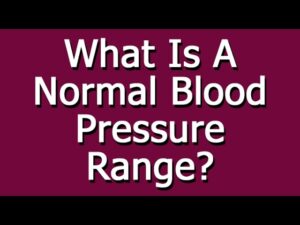http://on.fb.me/PreOp_com – NEW facebook page – it’s cool! Patient Education Company Your doctor has recommended that you undergo a Splenectomy – or spleen removal surgery. But what does that actually mean? The spleen is one of the organs in your body that works to clean your blood. The Spleen is located behind the stomach… and to the left of the liver. Specifically, the spleen picks out and destroys red blood cells that are no longer useful. A Splenectomy is the surgical procedure used to permanently remove the spleen from the body. Patient Education Reasons for removing the spleen vary. Most spleen removal surgery is performed in an emergency situation, during which internal bleeding may be putting a patient’s life at risk. This program assumes, however, that you are not currently in an emergency setting. In your case, the reason for removing the Spleen may be to treat a blood disease, blood congestion, Gaucher’s disease, white blood cell deficiency, the growth of a tumor, or the growth of cysts. Occasionally the Spleen is removed as part of an action taken to determine the best course of treatment for Hodgkin’s disease. Patient Education Company Once in place, the laparoscope will provide video images, that allow the surgeon to carefully cut the ligaments that connect the spleen to the diaphragm as well as the spleen to the colon. Now the doctor can gently pull the liver aside… then pull back the stomach to reveal the spleen. All remaining tissue between the spleen and the stomach including small blood vessels, as well as the spleen and diaphragm are cut. The main vessels that supply blood to the spleen – the splenic artery and the splenic vein are closed off and cut. Finally, the spleen is maneuvered into a special retrieval bag where it is broken into smaller pieces… and removed through one of the laparoscopic working ports. All of the instruments are withdrawn… the carbon dioxide is allowed to escape… and the skin is closed with sutures or staples. Finally, sterile dressings are applied. Patient Education Company Splenectomy surgery only rarely leads to complications. In adults, the liver and other parts of the immune system are susceptible. In children however, the loss of the spleen can weaken the immune system. In either case, your doctor may prescribe a series of antibiotics to help your body’s immune system fight off bacterial infections – such as pneumonia and pancreatitis. Another potential side effect of surgery is a persistent residual neuralgia – or pain – around the scar. It can be either localized or general. It may develop soon after surgery – or even weeks or months later. Usually it will decrease in intensity with time. But in very rare situations it can become permanent. Patient Education More frequently patients report achiness in the shoulders and chest. This is caused by the body’s reaction to the carbon dioxide used to inflate the abdomen and it will clear up in a matter of a few days. The most serious problem would likely be a puncture the bowel or liver. But these are very rare occurrences. Finally, as mentioned earlier, the surgical team may decide to end the laparoscopic procedure and convert to open surgery.

Spleen Removal Surgery Laparoscopic Splenectomy PreOp® Patient Education
- Post author:
- Post published:May 31, 2021
- Post comments:0 Comments
You Might Also Like
Sperm Increasing Medicine Clomiphene

Functional Training by Suples Training Systems -Circuit Training- Level Suples Fit

Wrestling Strength “Heavy Circuit” Training

How to do a Donkey Kick Exercise

Sports Surgeries Video – 2

Supplements Video – 6

How To: Skull Crushers

YO Sperm test: They play rugby – but can they swim?

Improve Muscle Gains & Health with Evion 600

What To Eat Before A Cross Country Race

Adductor Machine-3

Weight Loss Capsules in Pakistan 03244079761

Male Sex Hormones

What Is A Normal Blood Pressure Range?

Friday WOD @ DEFINITION FITNESS GYM

How to do an ECG- OSCE

The Physiology of Tai Chi and QiGong

Pre/During/Post Workout Drink || SHREDDED NEXT LEVEL by Guru Mann ||
Fitness Testing

How Does Exercise Impact Weight Loss?

CIC305 Anabolic Steroid

Diet & Mental Health Video – 1

What Is The Definition Of Physiology Medical School Terminology Dictionary

Foods Nutrition Video – 2

Abscess Incision and Drainage

Badminton Video – 4

What is cardiovascular exercise — Definition of cardiovascular endurance

What is living kidney donation and can I be a kidney donor?

What is SPORTS MEDICINE? What does SPORTS MEDICINE mean? SPORTS MEDICINE meaning & explanation, NEED

Vomiting and Diarrhea

25 Foods For Heart Disease – Foods To Help Heart Disease

Diabetes Monitoring – NO MORE PRICKING YOUR FINGERS!

Bodybuilding Nutrition, Diet Recipes & Workout – 48

Wall Walk Anatomy

Top 10 fruits to eat while Breastfeeding

Healthkart Ultra Omega-3 with 425mg EPA, 325mg DHA, extracted from sardines & free from heavy metals

Anabolic Steroids – History, Definition, Use & Abuse Video – 36

Insulin and Weight loss ➠ How to Control & Lower Insulin Resistance Levels Fat Loss Diabetes Leptin

What is diabetes?

what is mineral by Indian minerology

A FITNESS PROGRAM FOR SHORT + PETITE WOMEN

